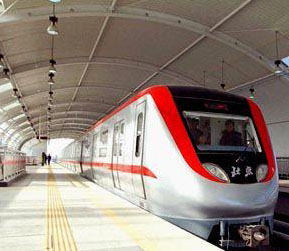Rail transit: the elixir for urban traffic?
Due to the rapidly increasing number of cars, the municipal government in Beijing now allocates car license plates to new car buyers through a lottery system, aiming to restrict the increase in new cars to 240,000 a year.
The city also raised downtown parking fees and has been closely monitoring cars parked in unauthorized places since April, forcing many car owners who cannot find a cheap parking space to commute by public transport.
Although the measures are said to have had some effect, as some car owners have said that congestion has eased a little, political advisors consider the development of rail transit as the most effective solution for traffic jams.
"Not only large cities like Beijing and Shanghai, but smaller cities should also develop a rail transit system to ease traffic conditions,” said Jia Kang, a member of the Chinese People's Political Consultative Conference (CPPCC), the country's top political advisory body, in March.
“The urban rail transit project may be a solution for traffic problems for city planners, but the management of the industry should be standardized,” said Gao Xiaomei, a CPPCC member.
Similar to its automobile industry, urban rail transit in China has a weak foundation and is based on a model developed by foreign countries, which has caused standardization problems.
Shanghai’s railway Line One, for instance, has five types of trains in operation with different maintenance and upgrading devices, which have proven to be obstacles for their administration.
Gao suggests the creation of passenger service standards for urban rail transit in order to prevent chaos in administration.
"There are problems in large cities' rail transportation systems, as minor accidents have occurred in Beijing, Shanghai, Guangzhou, and Shenzhen. We should be cautious," she said.


















